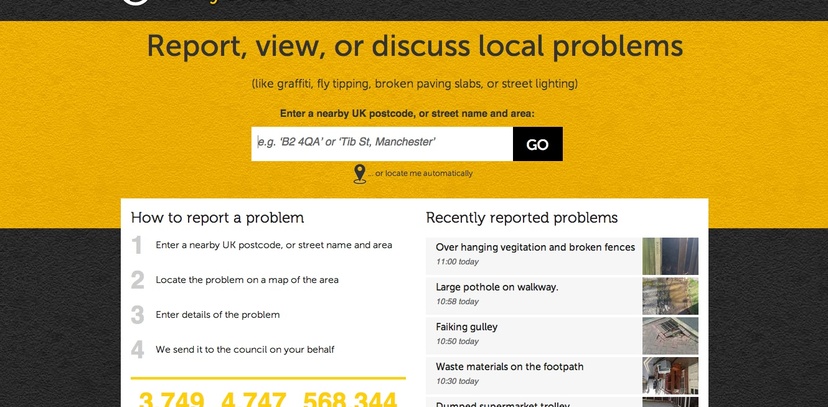
Despite the challenges of a tough economic climate, building developments are ongoing across Britain, introducing new places to live and work into existing communities. However, whilst the long term impact of changes to the built environment are significant and far-reaching, community engagement in the planning process is yet to embrace potentially transformative web technologies.
The British planning system has the opportunity to turn itself into an accessible service for broad community feedback where democratic engagement in architecture and urban design is the norm.
Here are just a few of the tools they could use to achieve this:
1. FixMyStreet: The most simple tool the planning system could implement would be one like FixMyStreet which allows residents to report issues to their local councils online. The success of this tool shows there is a genuine interest in using online platforms to give feedback on the built environment, and by extending the functionality of such a service to include building proposals, the public would have an accessible and functional tool to engage online with plans for their area. The cost involved in this would be minimal.
2. StickyWorld: Designed to encourage collaboration, StickyWorld allows individuals and organisations to upload images, PDFs, videos and 3D models into online ‘rooms’ where people can be invited to leave feedback via online sticky notes. Rooms can also be set as public exhibitions, where anyone has access to the work. This would be ideal for the planning system, allowing them to upload 3D models of proposed designs and receive feedback from the public. This tool is currently free, meaning it could be implemented at minimal cost.
3. 3D Online Design and Consultation: Web tools where buildings can be designed in 3D online are available for interior design, via companies like Square Clock, and for the design of entire boroughs via tools such as YouCanPlan. This tool allows people to better understand the design work of their built environment. YouCanPlan was recently used by Birmingham Council to inform and engage residents with planned housing regeneration in the inner-city area of Lozells. There is a cost involved in customising these tools, but the opportunity for residents to view fully-formed 3D models of building plans in their local areas could transform the planning system.
Better involving local people in the planning process can contribute to the creation of more engaged communities. Tools which offer the opportunity to visualise and comment on future developments will inevitably lead to more feedback, encouraging an increased role for residents in shaping the building developments that surround them. Web tools have transformative potential, offering the planning system an exciting opportunity to engage with the wider public.
Guest post by: Joe Peach of Slider Studio.